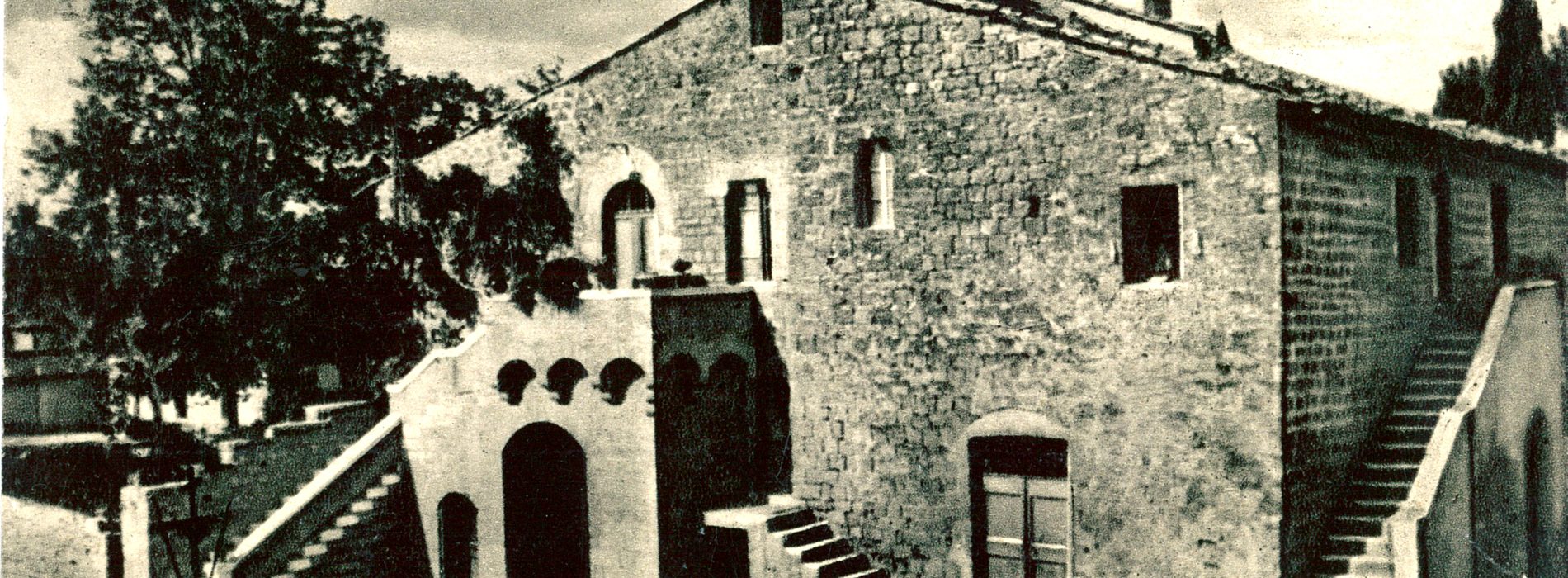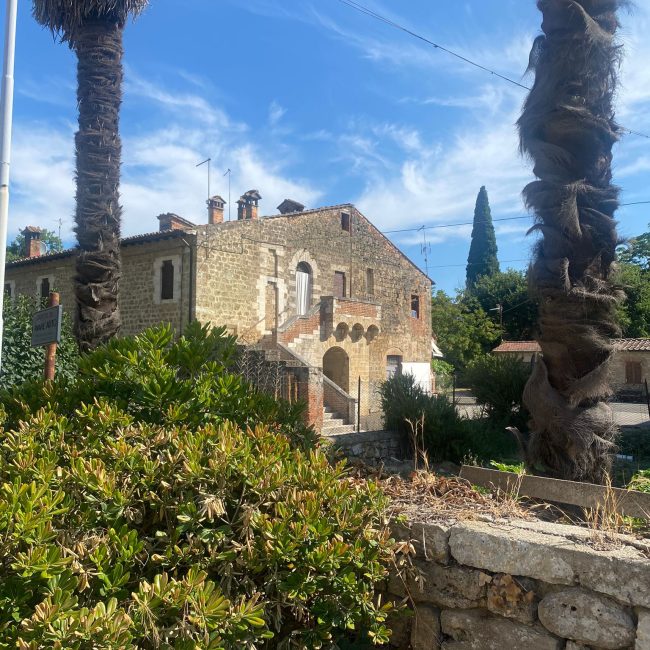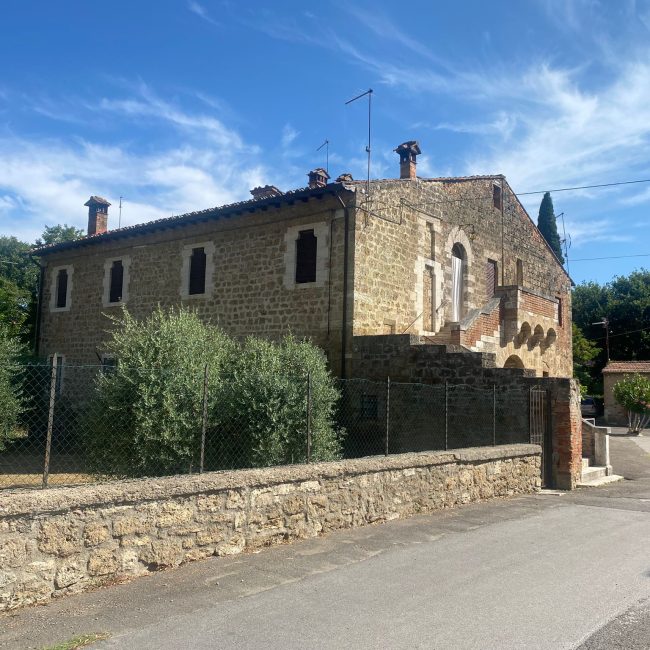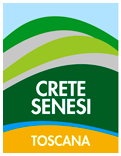The Palace
Nestled in the rural landscape just outside the center of Asciano, near the Bestina stream, stands an imposing building known as Palazzo Tolomei, often mistakenly associated with the Cacciaconti family.
History
Its first certain documentary record dates back to 1317, when Meo di Guglielmo Piccolomini acquired a share of property in the Pian delle Vene area, including a mill and a palace, following a debt owed by the Gallerani family.
A few years later, in 1319, the entire complex was purchased by Antonio di Meo Tolomei, a member of one of the most influential families of Siena. The palace—referred to as palatium positum prope Scianum in the sharecropping documents between 1326 and 1328—remained the property of the Tolomei family at least until the end of the 15th century, as confirmed by the Siena land registry records (the so-called lire), where it is repeatedly described as a "palazaccio," half-ruined and burned during the war, a clear sign of its state of decay.
Architecture
The building preserves original elements especially on the right side, recognizable by the rough travertine stonework, while the left portion has undergone later alterations. Several notable features stand out on the façades:
-
On the eastern side, the negative imprint of a lowered arch that was dismantled is visible, with only the springing stones remaining.
-
On the upper part of the western side, “L”-shaped corbels with a projecting dripstone cornice can be seen, indicating the presence of an original canopy, comparable to structures in Sienese architecture from the 12th–13th centuries.
-
Beneath this canopy, there must have been a window or French door, traces of which are faintly visible.
Eighteenth-century sources also mention that the building included a tower, later lowered, and a “trabocchetto” — a detail suggesting the presence of defensive devices or distinctive architectural elements.
Adjacent to the original core, a building wing with brickwork in regular courses and stone arches—related both to doorways and windows—developed. Later, another brick building was added, which is clearly distinguishable today.
-








